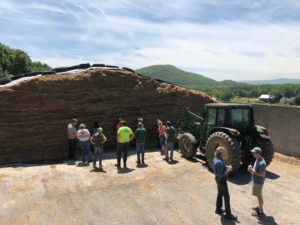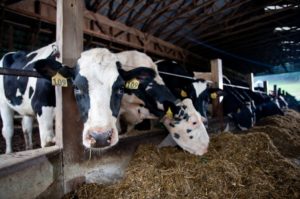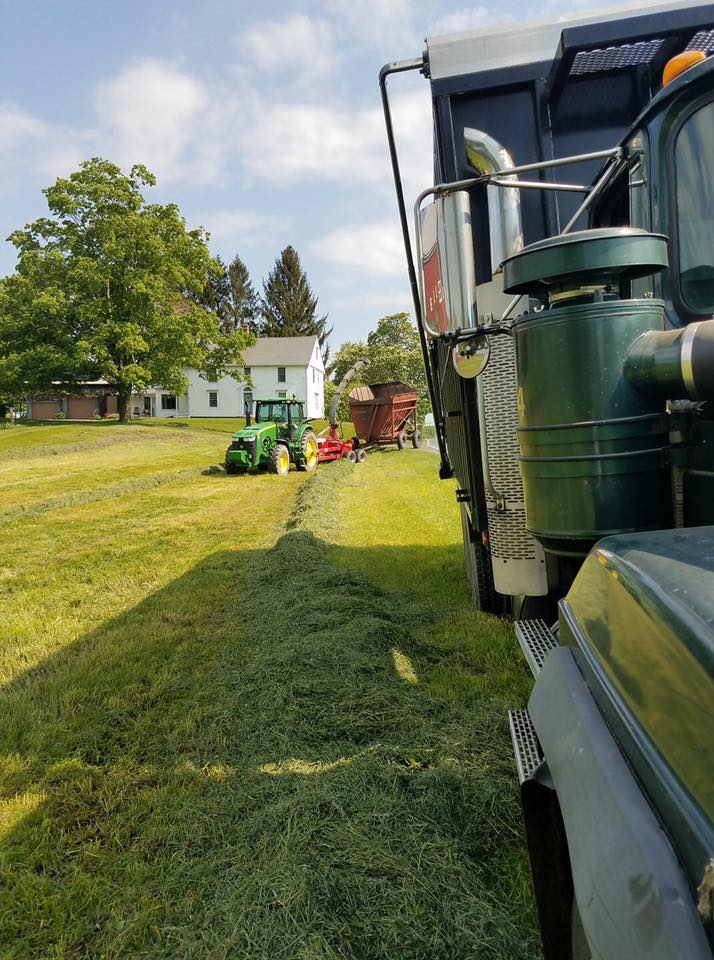Many New England dairy farmers grow their own forage, or cow food, for their herd. That means our cows eat local – and we know everything about our crops from seed to silo.
At Barstow’s Longview Farm, we raise about 250 acres of corn and 200 acres of hay and alfalfa.
 Hay fields might look like just a field of grass, but it is actually a crucial part of our cows’ diet. We will cut our hay crop four or five times in a year so our animals have access to fresh, nutritious food year round.
Hay fields might look like just a field of grass, but it is actually a crucial part of our cows’ diet. We will cut our hay crop four or five times in a year so our animals have access to fresh, nutritious food year round.
The first harvest starts before Memorial Day. Fresh grass contains the highest protein content when it’s in early bud stage, providing our cows optimal nutritional value.
It is important to harvest at the time the crop is ready, not too late or too early.
We will harvest hay again around the Fourth of July. Typically the second cutting provides the lowest yield.
The third cutting will happen around the end of August. Soon after that hay is in the silo, the farmers will turn their attention toward the daunting task of corn harvest.
 Finally the fourth hay cutting happens once the corn is in the silo – approximately mid-October. The grass will go dormant through the winter and begin to grow again come spring.
Finally the fourth hay cutting happens once the corn is in the silo – approximately mid-October. The grass will go dormant through the winter and begin to grow again come spring.
Because the hay and alfalfa are not cut at their roots, we do not need to cover-crop on these pieces of land. We practice rotational grazing on parcels of hay and corn land where it make sense (not too hilly or wet for corn), switching between hay, corn, and alfalfa every four years.
Our hay and corn harvests will last through the winter – allowing us to feed our animals from the land we farm, year round.
The hay is packed tightly in bunker silos, using tractors to push it down, to eliminate oxygen so that the feed doesn’t spoil. The hay will ferment and be called haylage (or grass silage).
 Once packed, the bunker silo is covered with plastic and tires to promote fermentation and keep the feed dry from the elements. October to May is a long time without green grass!
Once packed, the bunker silo is covered with plastic and tires to promote fermentation and keep the feed dry from the elements. October to May is a long time without green grass!
Each day, we feed haylage and corn silage to our cows. Cows are grouped based on their lactation and time in their life so we can optimize their diets. Keeping their diet consistent will keep their health and milk production consistent. Our girls always have access to food so they can stay healthy and comfortable.
Quality feed is the difference in quality milk.
Caring for our land, soil, and crops is directly linked to animal health, product quality, and our success as a business.
